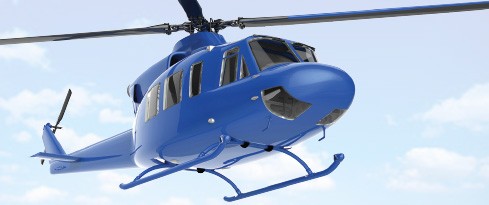To Land a Brick

By Mike Howie
“An airplane whose engine fails is a glider. A helicopter whose engine fails is a brick.”
Famous physicist Neil deGrasse Tyson tweeted that, and to an extent he’s right. If the blades of a helicopter completely stop spinning while in flight, that helicopter is going straight down. But helicopter blades spin incredibly fast — in some cases faster than the speed of sound — so even if the engine dies while in flight, the blades will continue to spin, giving the pilot time to land safely.
How Helicopters Fly
To understand how a pilot can safely land a helicopter without an engine, you need to know a bit about the physics of what makes a helicopter stay in the air. Basically, the blades act like a giant fan that pushes air toward the ground with enough force to push the rest of the helicopter upwards. But the engine isn’t the only way to make the blades spin. When the blades slow down, air begins to move upward through them, making them spin in the same way wind can make a windmill spin. Pilots can use that air movement to keep the blades spinning by adjusting their pitch with a control called the collective.
Powerless Landing
With the engine off, the pilot is using some serious skills to keep the blades spinning — but how can the descent be controlled? This is where physics comes in: Because the blades are spinning in a circle, the inside of the blade is moving slower than the outside of the blade. This difference in speed means that the inside of the blade can continue to let air pass around it, which the pilot uses to keep the blades spinning, while the outside of the blade is moving fast enough to create lift. The pilot changes the pitch of the blades to adjust how much lift is being created, and in doing so can gently take the helicopter down for a landing. It’s a process called autorotation.
So Dr. Tyson wasn’t exactly right. And, in fact, because a helicopter lands vertically while a plane lands horizontally, it requires much less speed to get on the ground safely, and there’s less risk of crashing into something. That means it’s actually safer to land a helicopter without an engine than it is to land a plane without one.
DISCUSSION QUESTIONS
What variables determine how fast a helicopter’s blades need to spin to get it in the air?
VOCABULARY
- Autorotation
- Collective